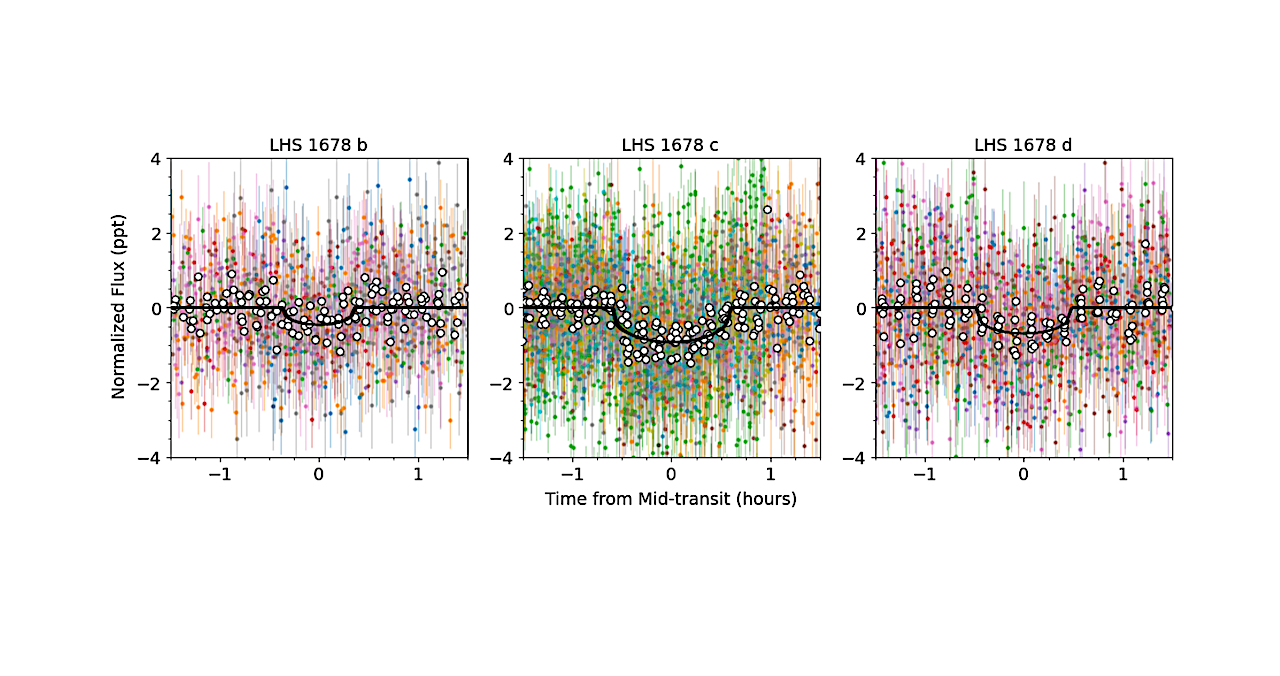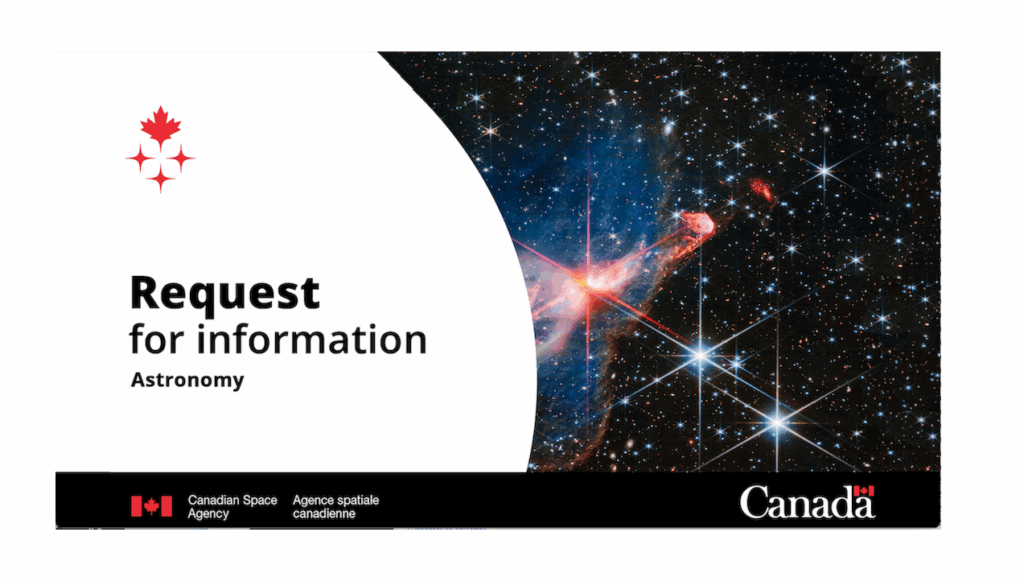Validation Of A Third Planet In The LHS 1678 System

The nearby LHS 1678 (TOI-696) system contains two confirmed planets and a wide-orbit, likely-brown-dwarf companion, which orbit an M2 dwarf with a unique evolutionary history. The host star occupies a narrow “gap” in the HR diagram lower main sequence, associated with the M dwarf fully convective boundary and long-term luminosity fluctuations.
This system is one of only about a dozen M dwarf multi-planet systems to date that hosts an ultra-short period planet (USP). Here we validate and characterize a third planet in the LHS 1678 system using TESS Cycle 1 and 3 data and a new ensemble of ground-based light curves. LHS 1678 d is a 0.98 +/-0.07 Earth radii planet in a 4.97-day orbit, with an insolation flux of 9.1 +0.9/-0.8 Earth insolations.
These properties place it near 4:3 mean motion resonance with LHS 1678 c and in company with LHS 1678 c in the Venus zone. LHS 1678 c and d are also twins in size and predicted mass, making them a powerful duo for comparative exoplanet studies. LHS 1678 d joins its siblings as another compelling candidate for atmospheric measurements with the JWST and mass measurements using high-precision radial velocity techniques.
Additionally, USP LHS 1678 b breaks the “peas-in-a-pod” trend in this system, although additional planets could fill in the “pod” beyond its orbit. LHS 1678’s unique combination of system properties and their relative rarity among the ubiquity of compact multi-planet systems around M dwarfs makes the system a valuable benchmark for testing theories of planet formation and evolution.
Michele L. Silverstein (University of Maryland, Baltimore County, NASA Goddard Space Flight Center, GSFC Sellers Exoplanet Environments Collaboration), Thomas Barclay (NASA Goddard Space Flight Center), Joshua E. Schlieder (NASA Goddard Space Flight Center), Karen A. Collins (Center for Astrophysics | Harvard & Smithsonian), Richard P. Schwarz (Center for Astrophysics | Harvard & Smithsonian), Benjamin J. Hord (NASA Goddard Space Flight Center), Jason F. Rowe (Department of Physics and Astronomy, Bishops University), Ethan Kruse (University of Maryland, College Park, NASA Goddard Space Flight Center), Nicola Astudillo-Defru (Departamento de Matematica y Fisica Aplicadas, Universidad Catolica de la Santisima Concepcion), Xavier Bonfils (Univ. Grenoble Alpes), Douglas A. Caldwell (SETI Institute), David Charbonneau (Center for Astrophysics | Harvard & Smithsonian), Ryan Cloutier (McMaster University), Kevin I. Collins (George Mason University), Tansu Daylan (Department of Physics and McDonnell Center for the Space Sciences, Washington University), William Fong (Department of Physics and Kavli Institute for Astrophysics and Space Research, Massachusetts Institute of Technology), Jon M. Jenkins (NASA Ames Research Center), Michelle Kunimoto (Department of Physics and Kavli Institute for Astrophysics and Space Research, Massachusetts Institute of Technology), Scott McDermott (Proto-Logic LLC), Felipe Mergas (Instituto de Astrofisica de Canarias (IAC), Departamento de Astrofisica, Universidad de La Laguna (ULL)), Enric Palle (Instituto de Astrofisica de Canarias (IAC), Departamento de Astrofisica, Universidad de La Laguna (ULL)), George R. Ricker (Department of Physics and Kavli Institute for Astrophysics and Space Research, Massachusetts Institute of Technology), Sara Seager (Department of Physics and Kavli Institute for Astrophysics and Space Research, Massachusetts Institute of Technology, Department of Earth, Atmospheric, and Planetary Sciences, Massachusetts Institute of Technology, Department of Aeronautics and Astronautics, MIT), Avi Shporer (Department of Physics and Kavli Institute for Astrophysics and Space Research, Massachusetts Institute of Technology), Evan Tey (Department of Physics and Kavli Institute for Astrophysics and Space Research, Massachusetts Institute of Technology), Roland Vanderspek (Department of Physics and Kavli Institute for Astrophysics and Space Research, Massachusetts Institute of Technology), Joshua N. Winn (Department of Astrophysical Sciences, Princeton University)
Comments: Accepted for Publication in The Astronomical Journal, 7 Figures, 4 Tables, 13 Pages
Subjects: Earth and Planetary Astrophysics (astro-ph.EP); Solar and Stellar Astrophysics (astro-ph.SR)
Cite as: arXiv:2403.00110 [astro-ph.EP] (or arXiv:2403.00110v1 [astro-ph.EP] for this version)
Submission history
From: Michele Silverstein
[v1] Thu, 29 Feb 2024 20:28:32 UTC (2,352 KB)
https://arxiv.org/abs/2403.00110
astrobiology








